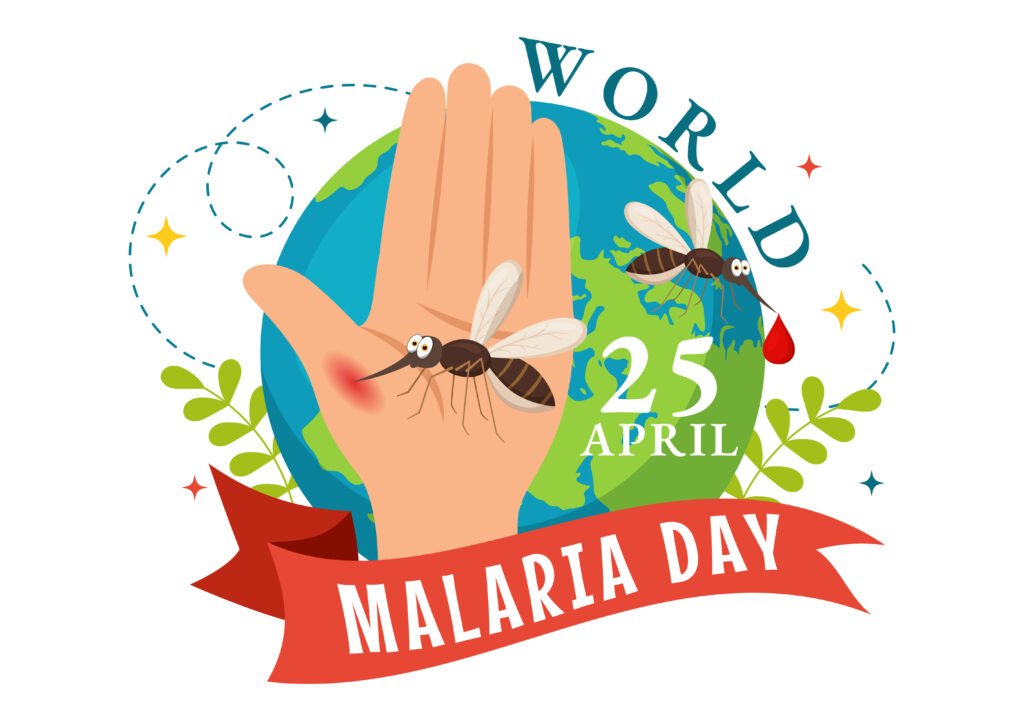
When is Malaria Day celebrated
World Malaria Day is marked each year on the 25th of April which is an occasion that helps highlight the global efforts to end malaria. It also indicates the need for sustained political commitment to the elimination of malaria. When a country has conducted the elimination of indigenous transmission of malaria for 3 consecutive years then it can officially request certification from WHO. Since 2015, there have been about 12 countries that have been certified as malaria-free by WHO. Let us take a look at more about mosquito-borne malaria eradication and how does impact of climate change on Malaria affects people.
What causes malaria
Malaria is one of the life-threatening diseases. But what causes malaria? It is mainly transmitted through the bite of an Anopheles mosquito. Infected mosquitoes tend to carry a parasite called as the Plasmodium parasite. It is mainly due to this parasite that bites you, that you get malaria.
Once this parasite enters your body, it travels to the liver where it tends to mature. After a few days, the mature parasite enters the bloodstream and starts to infect the red blood cells. After about 48 to 72 hours, the parasite inside the red blood cells continues to multiply which causes the cells to burst open. The parasite then continues to infect all the red blood cells which results in symptoms that can last for two to three days at a time.
There are four different types of parasites that can infect humans and they can be provided as follows:
- Plasmodium vivax
- Plasmodium ovale
- Plasmodium malariae
- Plasmodium falciparum
Plasmodium falciparum tends to cause a more severe form of malaria than all the other types. Moreover, those who contract this form of malaria also have a higher risk of death. It is also seen that an infected mother can also pass it on to their baby at birth. This is called as congenital malaria. Since malaria can be transmitted through blood here are a few other ways that malaria can be spread:
- A transfusion
- Use of shared syringes or needles
- An organ transplant.
Symptoms of malaria
The symptoms of malaria mainly start developing within 10 days to even 4 weeks which is followed by the infection. In some cases, the symptoms may not develop even if months pass by. Some malarial parasites can enter the body however can be dormant for long periods of time. Some of the common symptoms of malaria can be provided as follows:
- Rapid breathing
- Fatigue
- Diarrhea
- Headache
- Chills
- Rapid heart rate
- Cough
- Fever
- Chills
- Muscle or joint pain
- Nausea and vomiting
Some people who have malaria experience several cycles of malaria “attacks.” An attack usually starts with chills and shivering which is followed by high fever and is also followed by sweating. The temperature then returns to normal after a while.
Impact of climate change on malaria:
Malaria is surely one of the most deadly and important tropical mosquito-borne parasitic diseases which have already approximately killed 1 million people and has afflicted about 1 billion people in all of Africa, Asia, and Latin America. Reducing the impact of malaria is hence one of the main motives of WHO.
Variations in climatic conditions such as rainfall patterns, temperature, and humidity also have a very strong effect on the longevity of the mosquito and the development of malaria parasites in the mosquito and subsequently its transmission. The global temperature has also been rising for the past 100 years with an accelerating warming since the mid-1950s. This increase could eventually affect the transmission of mosquito-borne malaria and increase its rate which is also an impact of climate change on malaria.
Elimination of malaria
Mosquito-borne malaria eradication is one of the top priorities that WHO has now been focusing on. For two decades there have been multiple resources and expertise devoted just to malaria eradication and this has been a continuous journey. Here are a few of the initiatives that are being taken to enhance the awareness about elimination of Malaria:
Reaching out to those who are at risk
Many of the tools such as insecticide-treated bed nets, rapid diagnostic tests, effective medicines, and access to treatment that helps fight malaria already exist however they need to reach out to the people who are at risk. Especially in countries where malaria is on the rise, it is important to reach these aids to them. This is where investment in partners and data systems helps access local places where aid is necessary comes into play.
Harnessing the power of data to lead elimination of malaria
In some places, malaria is a seasonal disease that is highly evident due to either changes in temperature or rainfall. In other places, factors such as elevation or geography can also play a role in the development of malaria. For many years, data on such places have been lacking hence it has many drawbacks. However with the help of real-time data nowadays it has become easier to control the location and timing during which malaria is likely to develop.
Advancing transformative innovation
To promote public health it is important to eradicate malaria from its root itself. There needs to be new innovations that could change the way that malaria is being dealt with now. While there are a lot of tools and insecticides that can control the spread there needs to be transformative innovation that can eventually eliminate malaria for good. There are also certain malaria vaccinations that are being developed by researchers which could control the spread of malaria greatly.
Strengthening the base support provided
Lastly strengthening the support in carrying out this operation is essential. This is where active engagement from civil society, political leaders, and influencers will highly affect the cause to be put in motion.
India is also targeting complete malaria elimination by the year 2030. Understanding and adopting various strategies from countries that have successfully eliminated malaria hence becomes essential, especially for a geographically diverse country like India. Some of the key points that can be adopted and learned can be provided as follows:
- Mandatory time-bound case reporting
- Rapid vector control response
- Elevated community participation
- Use of quality diagnostics
- Continuous entomological and epidemiological surveillance
- Higher investment in research
- Inclusion of prevention of re-establishment programs into the elimination plans
- Uninterrupted funds for the successful implementation of the malaria elimination program
- Private sector involvement
All of the above learning would eventually help both India and other South Asian countries in devising their programs for the elimination of malaria by also developing tailor-made strategies for their own regions.
World Malaria Day hence plays quite an important role in not just spreading awareness about malaria but also improving ways in which elimination of malaria can be done. For more insights on similar topics, explore Chrysalis High. Delve into a wealth of resources tailored to enlighten and engage.
FAQs:
What is the theme of World Malaria Day 2024?
The theme of World Malaria Day is Health Equity, Gender, and Human Rights. This occasion will highlight the continued need for investment and sustained political commitment to malaria prevention and control.
When was the first case of malaria?
The first case of malaria supposedly evolved from tropical Africa ranging about 2.5 million to 30 million years ago.
Is there a vaccine for malaria?
The R21 vaccine is the second malaria vaccine that has been recommended by WHO. The first one to be released was RTS, S/AS01 vaccine which was developed in 2021 and recognized by WHO.


